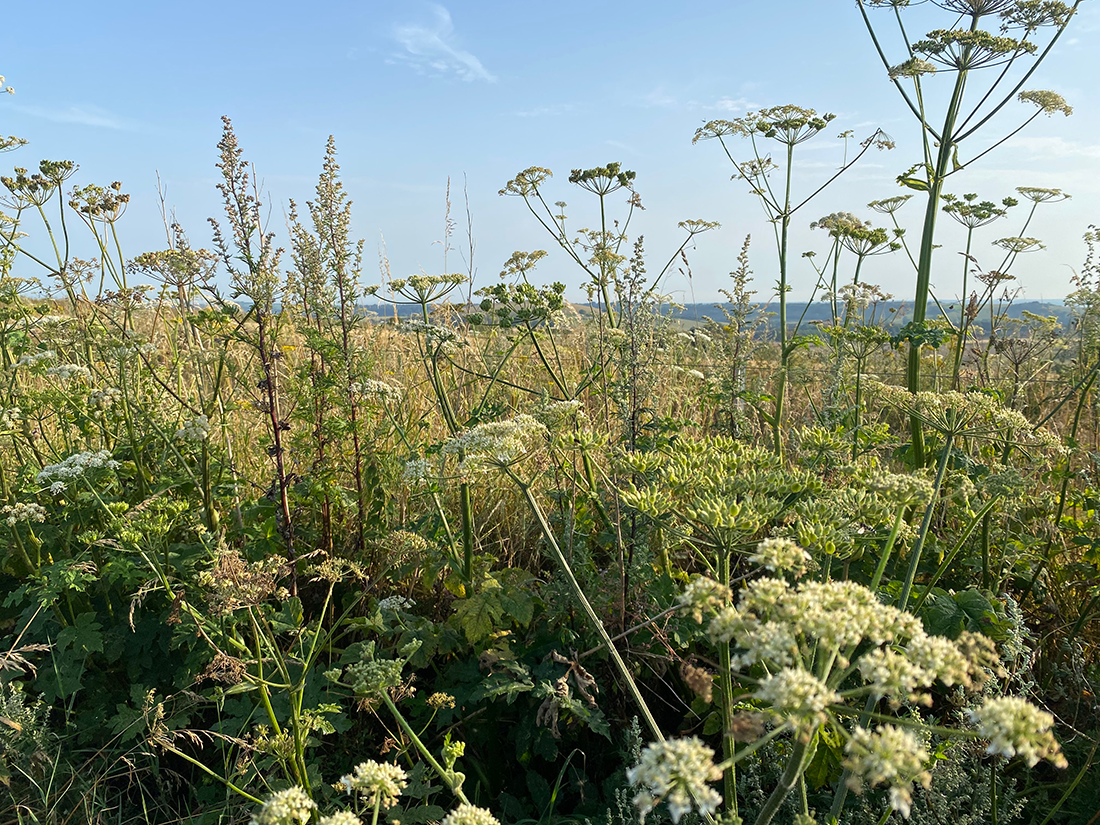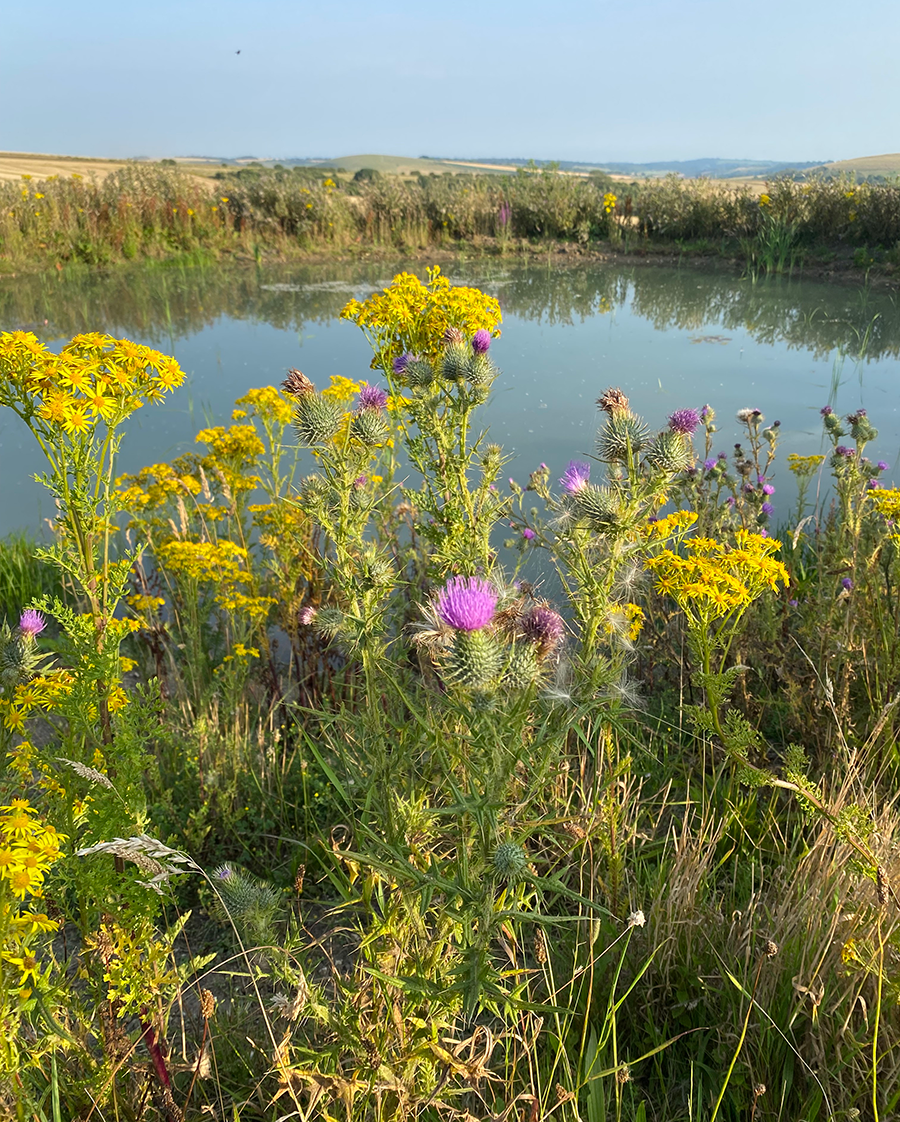
It was a beautiful summer’s evening as we set out on the South Downs Way walking west from Chantry at the back of Storrington.
The path was alive with the thrum of insects on the evening breeze. Comma butterflies danced between the ragwort, wild marjoram and harebells. As we arrived at the restored dew pond the sky was reflected in the still water and flocks of beautiful Goldfinches and Larks sang in chorus together. After the terribly wet start to the year and the problems that presented to our farmers it was good to witness the wind playing across a fine field of golden wheat.
It is impressive how the Angering Park Estate has been proactive over many years in balancing the need to produce food with the needs of nature and conservation. They work at scale investing in technology whilst articulating long term stewardship of the land. They work hard to achieve a balance between maintaining the fertility of the land and producing food for the nation, with close attention to the preservation of nature. They have become increasingly sophisticated in analysing the environment in their fields and in the nature corridors of woodland and hedgerows which they are continuing to create.

As we headed North our approach sent a huge flock of crows skywards from the newly harvested field. We passed red soldier beetles in the rows of cow parsley. Delicate blue field scabious and an abundance of wild flowers greeted us at the Chantry Hill Cross Dyke. We were greeted by a view I have known all my life with Storrington beneath us and the Weald and North Downs beyond. The late Bronze Age/Iron Age dyke is easily distinguishable. It is thought that these dykes were territorial markers and for defensive purposes. It is located on a north eastern promontory on the ridge of the Downs. Here the first cinnabar moth caterpillars of the season with their distinctive yellow and black stripes were enjoying the ragwort. We were delighted to find lots of seven spot native English ladybirds too.
Turning east with the Sussex Weald below us we looked up to the ridge to see a herd of happy grazing cattle.
We are so blessed to have free access to this extraordinary landscape where sustainable farming is successfully working to feed the nation in concert with the needs of nature.
This precious, familiar walk not only provides markers in the changing seasons of the year but also to the procession of my life.